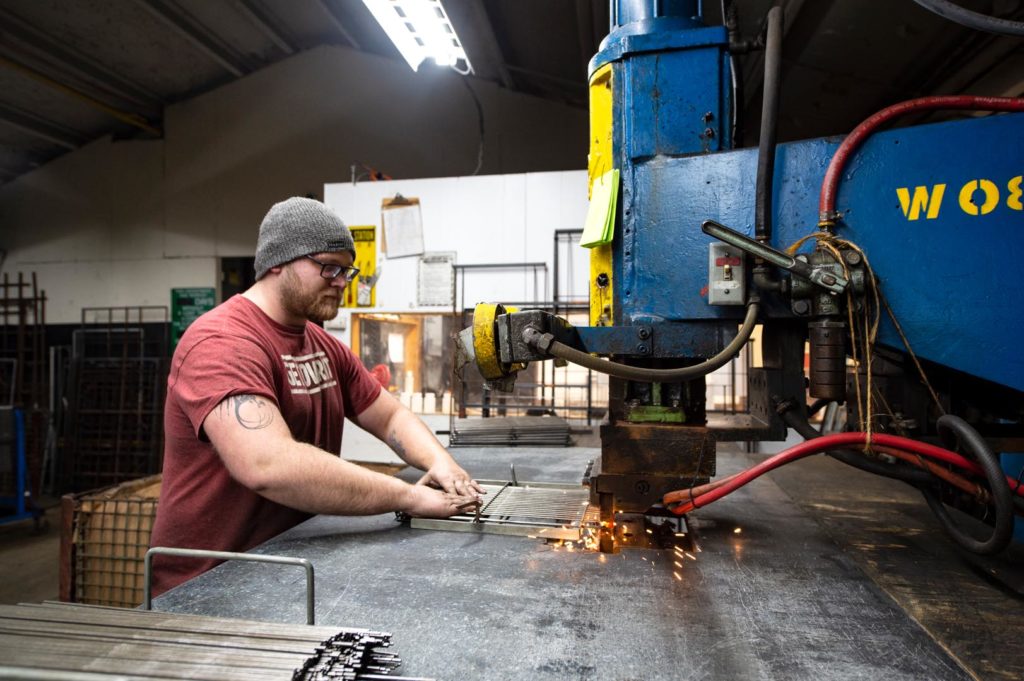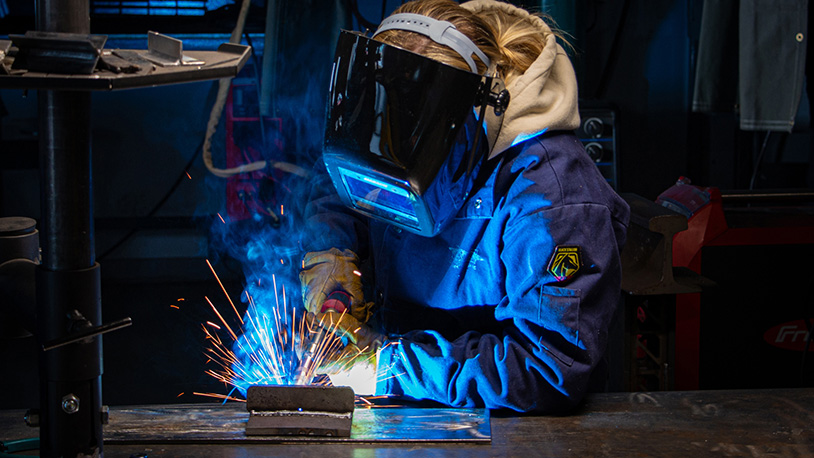Quick solutions to weld misalignment in Montana Mobile Welding and Repair Fabrication
Common Welding Repair Issues and How to Address Them Properly
Welding repair services typically encounter a variety of problems that can endanger the integrity of the end product. Usual issues consist of inadequate penetration, porosity, and misalignment, among others. Each problem presents one-of-a-kind difficulties that need specific techniques for resolution. Recognizing these problems is vital for welders intending to enhance their results and skills. This discussion will certainly explore these typical welding repair concerns and efficient methods to resolve them.
Poor Infiltration
Inadequate infiltration happens when the weld steel stops working to totally fuse with the base product, leading to weak joints and potential structural failures. This issue commonly stems from insufficient warm input, wrong electrode angle, or inappropriate welding speed. Welders may experience poor penetration as a result of a mistake of the needed criteria for a particular material thickness or type. Furthermore, contamination on the base material's surface can impede effective bonding, intensifying the issue. To attend to inadequate penetration, welders need to ensure appropriate setups on their devices and preserve a tidy job surface. Routine examination of welds is advised to recognize any kind of shortages early, enabling for prompt adjustments and the prevention of compromised structural integrity in welded assemblies.
Porosity
Porosity is an usual problem in bonded joints that materializes as little gas bubbles trapped within the weld metal. This defect can jeopardize the integrity of the weld, leading to lowered toughness and possible failing under anxiety. Belgrade. Porosity usually develops from contamination, wetness, or incorrect welding methods, which allow gases to escape into the molten weld pool. To resolve porosity, welders ought to guarantee proper surface area preparation, maintain a tidy workplace, and utilize ideal welding criteria. In addition, selecting the appropriate filler product and shielding gas can minimize gas entrapment. Regular examination and testing of welds can aid recognize porosity early, ensuring prompt rehabilitative actions are taken, consequently preserving the high quality and dependability of the welded structure
Imbalance
Imbalance in welding can develop from various variables, consisting of incorrect setup and thermal expansion. Understanding the origin is important for effective resolution. A number of correction methods are readily available to straighten components and guarantee architectural honesty.
Reasons for Imbalance
Welding misalignment commonly stems from a variety of underlying issues that can endanger structural integrity. One main reason is incorrect fit-up of parts prior to welding, which can cause voids and unequal surface areas. Variations in thermal development throughout the welding process can additionally lead to distortion, especially if the materials being joined have different coefficients of development. Additionally, inadequate fixturing and securing may fall short to hold components safely in position, bring about movement throughout welding. Inadequately maintained tools, consisting of welding makers and tools, may present disparities in the weld bead, additional adding to misalignment. Operator error, stemming from inadequate training or experience, can likewise play a substantial role in developing misaligned welds.

Adjustment Strategies Available
Addressing imbalance successfully requires a mix of corrective methods customized to the certain issues available. One common approach is the use of jigs or fixtures to hold elements in the proper position throughout welding, guaranteeing consistent placement. In addition, preheating the products can help minimize distortion and enhance fit-up. For significant misalignment, mechanical realignment techniques, such as utilizing hydraulic jacks or clamps, can be utilized to deal with the position before welding. Post-weld warm therapy may likewise be required to relieve stress and anxieties triggered by misalignment. Cautious assessment and adjustment during the setup phase can avoid imbalance problems from becoming significant problems, advertising a smoother welding procedure and enhancing overall structural stability.
Distortion
Distortion is an usual difficulty in welding that can develop from various variables, including unequal heating & cooling. Understanding the causes of distortion is vital for executing efficient avoidance techniques. Resolving this problem not only improves architectural honesty but additionally boosts the total high quality of the weld.
Reasons of Distortion
When based on the intense warm of welding, materials commonly go through adjustments that can lead to distortion. This phenomenon primarily emerges from thermal development and contraction throughout the welding procedure. As the weld area warms up, the product increases; upon air conditioning, it contracts, which can produce internal stresses. Additionally, uneven heating throughout a work surface can worsen these stresses, resulting in warping or flexing. The kind of material likewise plays a significant function; metals with differing thermal conductivity and coefficients of growth may react differently, bring about unpredictable distortions. In addition, poor joint design and poor fixturing can add to misalignment during welding, enhancing the probability of distortion. Comprehending these causes is vital for effective welding repair and avoidance approaches.
Prevention Techniques
Reliable prevention techniques for distortion during welding emphasis on managing warm input and guaranteeing proper joint style. Preserving a consistent heat input helps to decrease thermal expansion and contraction, which can bring about distortion. Utilizing methods such as preheating the work surface can additionally decrease the temperature level gradient, advertising uniform home heating. Furthermore, picking ideal joint styles, such as T-joints or lap joints, can improve stability and lower anxiety concentrations. Executing appropriate fixturing to protect the work surfaces in position better aids in keeping alignment during the welding process. Finally, staggered welding sequences can distribute warm extra evenly, preventing localized distortion. By applying these approaches, welders can substantially decrease the possibility of distortion and enhance the general high quality of their welds.
Splitting
Breaking is a common concern come across in welding repairs, usually arising from various variables such as inappropriate air conditioning rates, material selection, or insufficient joint preparation. The event of fractures can substantially jeopardize the honesty of the weld, leading to possible failings throughout procedure. To resolve this issue, welders need to initially analyze the source, making sure that products are compatible and suitably selected for the specific application. In addition, regulating the cooling rate during the welding procedure is important; quick cooling can induce stress and anxiety and cause splitting. Correct joint design and prep work additionally add to lessening the risk. Implementing these strategies can boost weld quality and toughness, inevitably lowering the chance of cracking in finished weldments.

Insufficient Combination
A considerable issue in welding repair services is insufficient combination, which occurs when the weld metal does not sufficiently bond with the base material or previous weld passes - Belgrade Welding. This issue can result in weaknesses in the joint, potentially jeopardizing the honesty of the bonded framework. Variables adding to incomplete blend include insufficient heat input, inappropriate welding method, and contamination of the surfaces being joined. To address this problem effectively, welders must assure correct pre-weld cleansing and surface preparation, as well as readjust their welding parameters to achieve sufficient penetration and combination. Routine evaluation throughout the welding procedure can additionally aid determine incomplete blend early, permitting timely restorative procedures to boost the general quality of the weld
Overheating
While welding fixings can improve structural honesty, overheating provides a considerable difficulty that can result in material destruction. Too much warmth throughout welding can modify the mechanical residential properties of metals, causing decreased strength, enhanced brittleness, and bending. This sensation is especially vital in high-stress applications where architectural integrity is vital. Recognizing overheating can include aesthetic evaluations for discoloration or distortion, along with keeping track of temperature level during the welding process. To mitigate the risks related to getting too hot, welders need to employ appropriate methods, such as regulating heat input, readjusting traveling speed, and utilizing ideal filler materials. Additionally, carrying out pre- and post-weld warm therapies can help restore material properties and improve the general high quality of the repair work, guaranteeing long-term efficiency and safety.
Regularly Asked Inquiries
What Are the Usual Indications of a Welding Problem?

Just How Can I Examine My Welds for Top quality?
To check welds for quality, one can utilize visual assessments, ultrasonic testing, and radiographic techniques. Each strategy ensures structural honesty, identifies defects, and verifies adherence to defined standards, ultimately enhancing the reliability of the welded joints.
What Security Precautions Should I Take While Welding?
When welding, one must focus on safety by wearing appropriate individual safety equipment, ensuring appropriate ventilation, protecting combustible materials away, keeping a clean office, and being conscious of surroundings to stop injuries and crashes.
Can I Repair a Weld Without Renovating the Entire Joint?
Fixing a weld without remodeling the entire joint is possible, depending on the damages (Welding). Techniques such as grinding, adding filler product, or making use of a welding process can successfully resolve details imperfections while preserving the bordering framework
What Equipment Are Important for Effective Welding Repair Works?
Important devices for reliable welding repair services consist of a welding equipment, wire brush, mill, protective gear, clamps, and filler products. Each device plays an essential role in guaranteeing high quality and safety throughout the repair service procedure. Porosity typically arises from contamination, dampness, or incorrect welding methods, which allow gases to run away into the liquified weld pool. Poorly conserved devices, including welding equipments and tools, may present inconsistencies in the weld bead, additional contributing to misalignment. When subjected to the intense warm of welding, products frequently go through modifications that can lead to distortion. Cracking is a typical issue run into in welding fixings, usually resulting from different elements such as inappropriate cooling prices, material choice, or inadequate joint prep work. A significant issue in welding repair work is insufficient combination, which happens when the weld steel does not properly bond with the base product or previous weld passes.